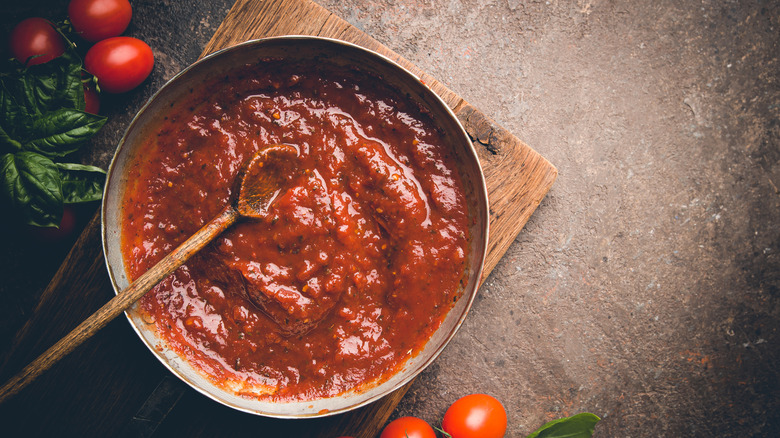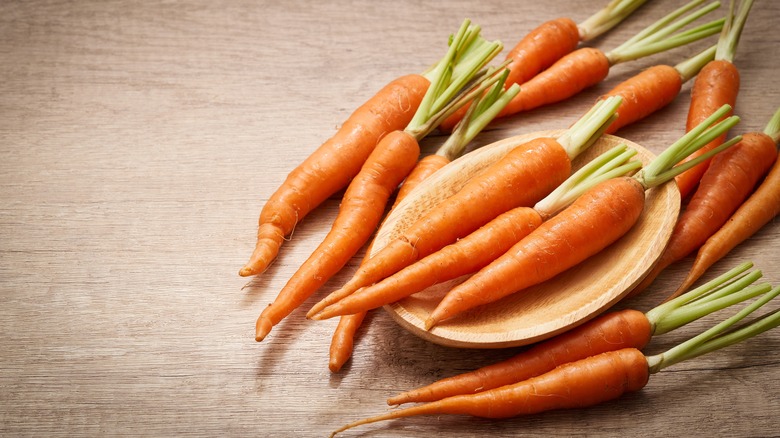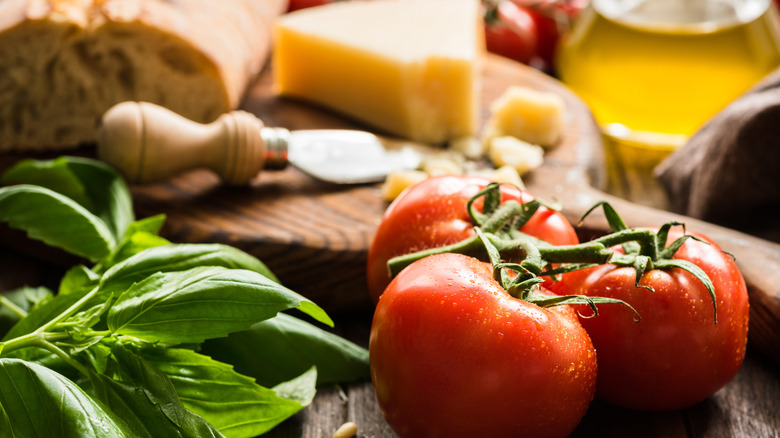What's The Point Of Putting Carrots In Your Tomato Sauce?
Garlic, basil, oregano, maybe a little red wine — these are all flavors you might expect to find in a pot of homemade tomato sauce. Roasting and simmering tomatoes should, ideally, bring out their natural sweetness (they are a fruit, after all). But if your only options are off-season, underripe, or canned tomatoes, they may not break down as well in the cooking process.
Some chefs (and Italian grandmothers) address this issue by adding a "pinch" of sugar to tomato sauce. As long as you add the sugar at the very last minute, that might work. The danger with using plain white sugar, however, is that one pinch too many can result in a sauce that's cloyingly sweet. This can be especially problematic if you're planning to use the sauce in other dishes, such as pizza, lasagna, and soup. So, what's a cook to do?
There's one simple ingredient you may not immediately think of when it comes to marinara sauce, but it just might save the day: the humble, unassuming carrot.
Carrots to the rescue
Celebrity chefs including Hugh Acheson and Giada De Laurentiis recommend using finely grated or diced carrots to lend a subtle sweetness to tomato sauces, balancing the acidity of the tomatoes without the risk of winding up with a too-sweet sauce. Carrots also lend a fresh, earthy flavor to sauces, adding to the complexity of the flavor profile.
As long as the carrots are finely cut or grated, they'll soften along with the rest of the ingredients, meaning they won't give your sauce a lumpy or uneven texture. (Peeling the carrots is optional but may make for a smoother sauce overall.)
Carrots are also a healthier addition than sugar and a great way to sneak in some extra, undetected nutrients without kids (or picky eaters) being any the wiser. Orange carrots contain beta carotene, a source of Vitamin A, which promotes eye health, as well as other vitamins and minerals, including biotin, potassium, and vitamin B6. Did someone say superfood?
More ways to up your sauce game
Carrots aren't the only addition that can up your sauce game. Adding anchovies and/or the rind of a hard cheese such as Parmigiano-Reggiano can impart a slightly salty, umami flavor. Stirring in butter after removing the sauce from its heat source, as Hugh Acheson does, is another pro move. (The Pioneer Woman uses a similar technique with a splash of heavy cream.)
Of course, while homemade sauce is ideal, sometimes the amount of time required to make it isn't. If you're using canned or jarred tomato sauce, follow Bobby Flay's advice for making tomato sauce and add some ingredients to spruce it up. Dried herbs and spices, fresh minced garlic, and olive oil are just a few suggestions. Drained, chopped olives, or capers can also add tang, while a dash of chili oil or dried red pepper flakes can quickly amp up the heat.
Whatever you choose to add, think outside the box and get creative. Who knows? You might be giving an Italian grandmother advice on how to make the Sunday gravy before you know it.


